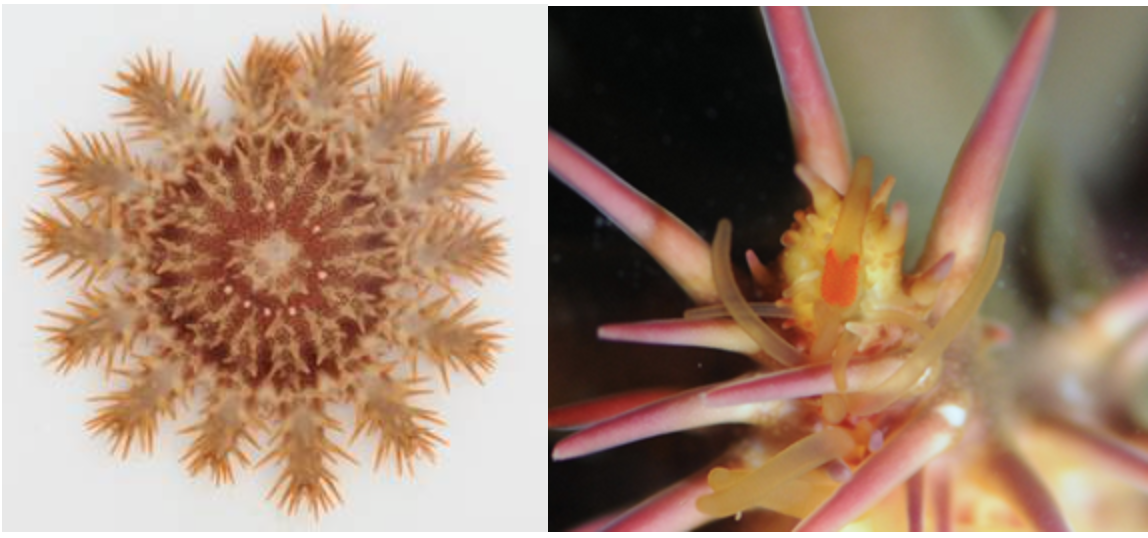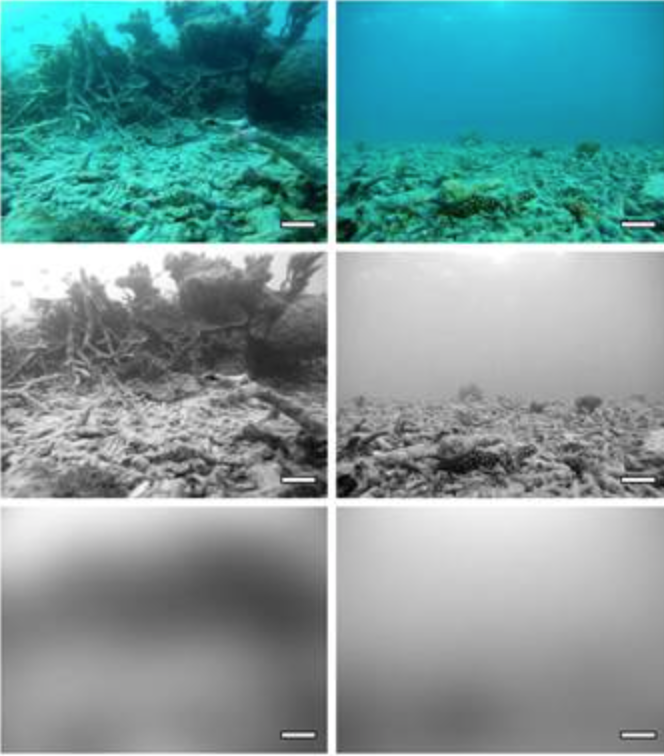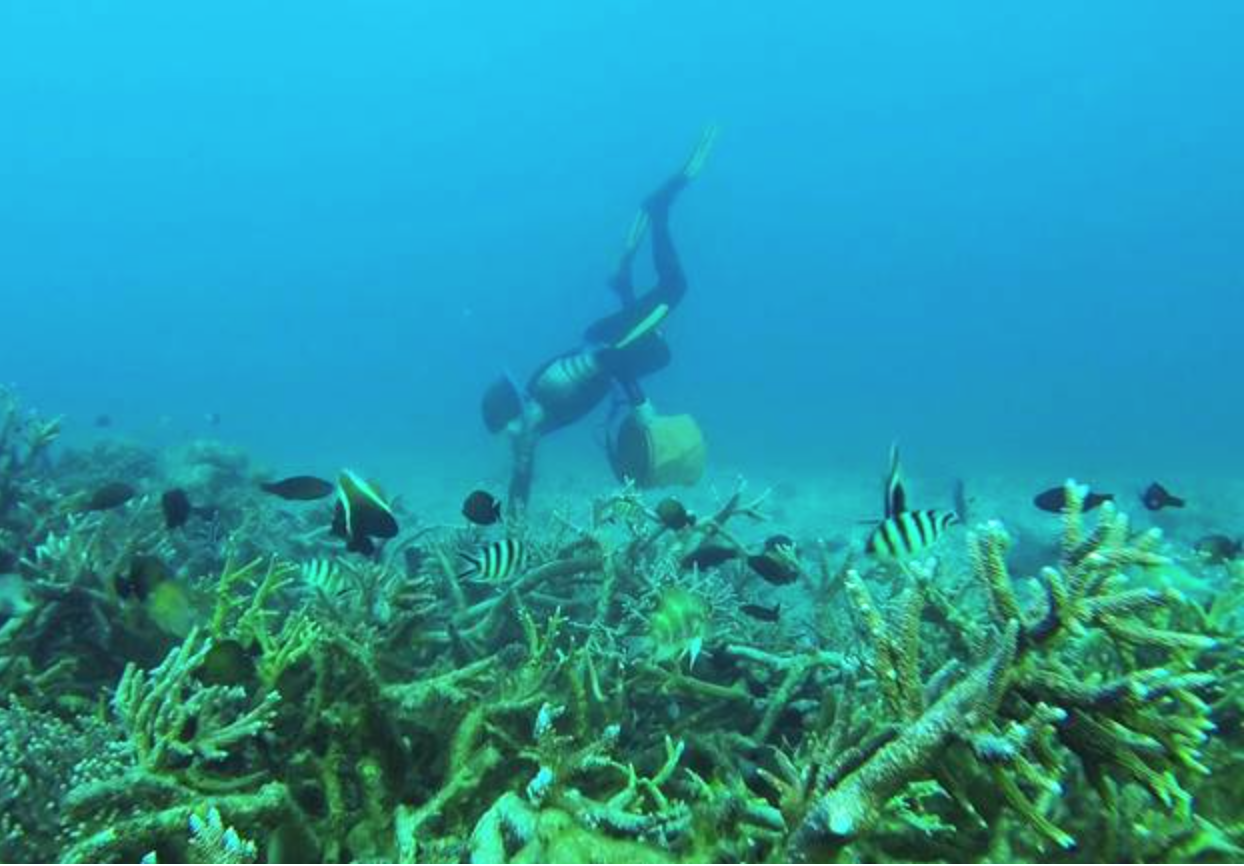By Amanda Franklin
If I ask you to think of animal eyes, what do you think of? Maybe you think of the vertical pupils of cat eyes, or perhaps the large compound eyes of various insects. I’ll bet that you don’t think of starfish eyes. Perhaps you didn’t even know starfish have eyes. But, in fact, starfish have eyes perfectly adapted for their needs.
All starfish, except for those that burrow underground, have one eye at the end of each arm. These eyes have evolved from tube feet and are compound eyes. A compound eye is made up of lots of individual units, called ommatidia, which contain photoreceptor cells, support cells and pigment cells. Each of these ommatidia detects light.

Compared to other animals with compound eyes, such as flies or dragonflies, the starfish compound eye is quite simple. But, working out what they see and how they use their vision is still quite complex. Dr. Anders Garm has gone a long way towards painting a picture of what the world looks like to a starfish. It is this research that Dr. Garm presented at SICB during the Low Spatial Resolution symposium.
So what do starfish see?
To put it simply, not much. But, they don’t need to see much. Rather than using vision, starfish use chemicals in the water to find food and other starfish to mate with. However, to use chemical cues to find food and mate partners, the starfish needs to stay in the right habitat. Dr. Garm suggests that this is what they use their vision for.
“[Starfish vision] is not so much distance detection and finding a reef, it’s much more for realizing that [they’re] wandering off a reef. So when [they’re] about to exit a reef for some reason, [they] can then see “Oops! That’s not a good direction to go in because there’s no reef and I need to go back”.”
For this purpose, they really only need to see what is reef and what isn’t. Their eyes have several adaptations that are tuned to this purpose. Firstly, their eyes are maximally sensitivity to blue light. This means that anything that is blue (i.e. the water) will look light and anything that isn’t (i.e. the reef) will look dark. So, to starfish, the reef will contrast with the water.
Secondly, they have low spatial resolution. This means, they cannot see details. To us, their vision would appear incredibly blurry. But, reef structures are large so they don’t need to see fine details. Dr. Garm and colleagues have shown that if the reef takes up enough of the starfish’s field of view, the starfish will move towards the reef. Starfish just need to see if they are near a big dark structure or not.
Lastly, they also have low temporal resolution. In fact, they have the slowest eyes of all animals. This means their eyes are tuned to see stationary objects (e.g. reef) rather than moving objects (e.g. fish). Starfish eyes are like a camera with a really slow shutter speed. Imagine you took a photo of a highway, and had the shutter open for 10 seconds. The cars would be a blur but the road, and any bridges or other stationary structures, would be visible.

Why study starfish vision?
Scientists have known that starfish have eyes for about two centuries, but Dr. Garm is the first to study what these eyes are used for. “I just thought it was pretty odd that these eyes were there and nobody has ever really checked how they worked and what behaviors they might be guiding”. Research into the basic function of these simple eyes can provide insight into what ecological factors may drive the evolution of vision.

Dr. Garm’s work can also help us understand neurobiology and information processing. Starfish have a relatively simple nervous system, with what can be thought of as a small brain in each arm. “There is a lot of extremely clever neurobiology going on, filtering and processing [visual information] with very few neurons” says Dr. Garm. Having a better understanding of simple visual systems could help us to build smarter robots that can process images more effectively.
This is not the end of starfish vision research for Dr Garm’s lab. Next, they are hoping to find out why deep sea starfish also have eyes, since there is very little light in the deep sea. One prediction is that they use vision to see bioluminescence from other starfish and communicate with each other. There is also still a lot more to be done to find out about starfish neurobiology and how their brain works. Maybe then we’ll be able to build robots that process visual information similarly to animal visual processing!

